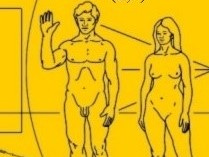Welcome to a new adventure. This week, let’s consider The Mercurian. A wonderful short story generously offered by the author. Please, before continuing here, click the link and read the story.
Okay, I trust you’ve read the story, so let’s proceed. Here’s what I love about the work:
The cultural precedent. The story riffs on two of the all-time classics of science fiction: Ringworld and Rendezvous with Rama. In both books, published in 1970 and 1973 respectively, earth sends out a team of astronauts to explore an abandoned spacecraft—a huge vessel—that had seemingly been used to carry its occupants to a new world. Or perhaps simply to house them. The premise allowed for humans to explore a marvelous, unoccupied paradise. On a smaller scale, we saw a version of this in the 1972 film Silent Running, in which a sort of Noah’s Ark of plant life is sent drifting into outer space. This earlier precedent proves how much people love this type of story. It’s a classic, and the biggest hurdle lies in how to reinvent it and make it fresh. From Logan’s Run to Lost Horizons to The Diamond as Big as the Ritz, people love the discovery of new contained worlds, but the story will fail unless the author finds a fresh way into the story.
That’s where the author works magic. The Mercurian flips the script. Instead of showing us astronauts exploring an empty ship, it explains how that ship—such a paradise, such a marvel—came to be empty. It answers the age-old question of how Ringworld or Rama came to be abandoned. It is the Mary Celeste, it is Ghost Ship, but with the answers brought to the fore. This is so smart. Very smart.
Another thing to love is the through-line object. The author morphs the current ship, basing its precedent on Voyager I & II. In particular on the “Pioneer Plaques,” designed in part by Carl Sagan and his wife Linda. By starting from this simple, well-known object, the author can make us believe the eventual massive spacecraft.
Likewise, but in reverse, the author introduces the massive die-off of humans by eventually tying that event to well-known “mouse utopias” and behavior sink. Again, pay attention to how the author moved from small-to-large to establish the objects (the plaque to the ship). But then from large-to-small to establish the dynamics (the human die-off to the mouse die-off). Very smart stuff here.
The story reinvents a favorite scenario by flipping the script on classics. And it uses existing, known cultural elements to make us believe the incredible. These are both grand accomplishments and worth study. The language is clear and easy to follow. I applaud the author.
And here’s what I’d like to like more.
The overall texture. And by “texture” I’m referring to the voice and variety of ways in which information is presented. The clear, consistent telling might feel thudding to some readers. We’re used to movies and how they dial our focus in and out, and how movies dramatize with action and dialog. Joseph G suggested as much in his comments recently. Something as simple as quotation marks can ground the story with a greater sense of “reality.” As does moving through the physical spaces of the ship. Smelling the dead. Carrying and burying the dead—and describing how beautiful they are. As the last generation, the “beautiful ones,” each corpse will be so lovely. That might be a stronger lead: “Our dead are beautiful.” Then unpack the details of that well-groomed beauty.
A stronger lead might be, “I am so beautiful,” for reasons we’ll soon get to.
Consider dramatizing with verbal exchanges, done in fast flashbacks to key events: the death of the last other passenger, abandonment by a parent, videos of the past.
Avoid “is” and “has” and “thought” verbs. Please go through and note any form of is, has, or an abstract thought verb. For example: apologize, knowing, understand, believed. Instead, look for more physical ways of saying or depicting these points. Back around Valentines Day we brainstormed so many ways to imply action even in an abstract process. Also note that when you dramatize you automatically submerge the “I,” because you’ll be aware of keeping the camera turned elsewhere.
Or… break all the “chuck rules” and burn this sucker down. Consider that as the final survivor of the “beautiful ones,” this narrator is the ultimate egotist. An arrogant prick. And this story is a prolonged, duck-faced selfie. A great last act of vanity meant to impress future strangers with the narrator’s beauty and intellect. Let the voice demonstrate that self-centeredness. Sure, we’re taught to sound humble, but this is fiction. For an example of how amusing a blow-hard can sound check out Oscar Wilde’s story The Remarkable Rocket.
Rather than tell us many of the things we already know, consider pruning some bits so you can add new egotistical bits that will demonstrate the voice of a “beautiful one.” One of the hallmarks of narcissism is to refer to things and assume everyone will understand the reference. “Name dropping” as it were. “Man-splaining.” That would allow your narrator—the ultimate narcissistic—to create mini scenes and quote strange names willy-nilly.
A neurotic voice will help hook readers, and build your authority. In small doses, braggarts are appealing. And by the end we’ll understand the full context for the sad, self-centered narrator, and that ultimate truth will break our hearts. Refer to the scandal over the fact that the woman on the Pioneer Plaque is shown with no vagina. In my youth that was a BIG deal.1 Cite trivia as a means for the narrator to dominate the reader.
The good news is that you’ve done the heavy lifting. Your idea is excellent and fully framed and sound. If you go back to revise, it’s only the fun part left to revisit. The voice. You’ve built a perfect house… now paint it shocking purple, with orange trim. Become a pushy, (secretly terrified) obnoxious (secretly lonely) vain (secretly despairing) asshole.
From Castaway to Moon, we’ve seen the lone narrator. Let’s see how you can spin the voice to make such a character fresh. It will be fun. I promise. The last human being, the last “beautiful one” deserves such a lofty (secretly tragic) voice.
Consider that reading is a pastime of loners and the lonely, so if you can recast solitude in a new way your readers will adore you.
My eternal thanks to the author for allowing me to discuss this story. In the near future I’ll make a post that’s strictly for writers to submit links. That will give me a pool of work to revisit for similar “Gloves Off” teaching moments.
I promise to be kind, and never to find fault unless I can suggest a valid fix.
It seems that Linda Sagan drew a vagina, but someone at NASA erased it, claiming that male genitalia was okay but a vagina would make it pornographic. A distinction that aliens probably will see as petty and creepy.








A note. If Sinister can nail a good voice, the woo-woo will happen, and the author will never go back to more conventional writing.
Thank you so much Chuck! This was honestly the most insightful and useful critique I've ever received. I'll be sure to be more of an egotistical asshole in the future.